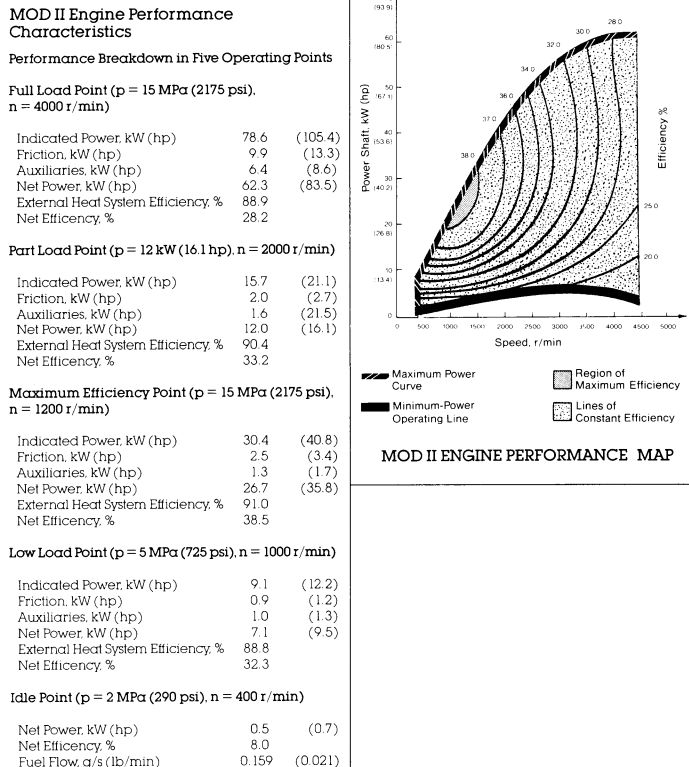Hey blade,
Here's an interesting appendix from a Nasa document related to the point you've raised.
There are numerous documents by Nasa and I’m sure you've come across many of them.

pdf-
https://www.google.com.au/url?sa=t&rct= ... _lwCw-D4MQ (6 MB)
I find the results interesting because being from Nasa they are (hopefully) less likely to be biased and more likely to be based on pure data analysis.
This research claims a net efficiency of
38.5% (I assume this is at shaft and after exhaust losses have been calculated, although I could be wrong)
and is indicated to be at 'Maximum Efficiency Point' which was probably reached by a large amount of experimentation to find the optimum power output for this specific engine whilst adjusting many variables, such as load, rpm, working gas pressure, delta T, etc
Here's a thread in regards to MPPT's (maximum power point trackers) that might be of some interest on the subject.
Forum member Nerdyee did some awesome work and experimenting on this device relating to stirling engines.
MPPT regulaters are a fairly recent development and I'm not sure if they use them in current Stirling technology, although they may do, and probably should.
http://stirlingengineforum.com/viewtopic.php?f=1&t=1163
vamoose
